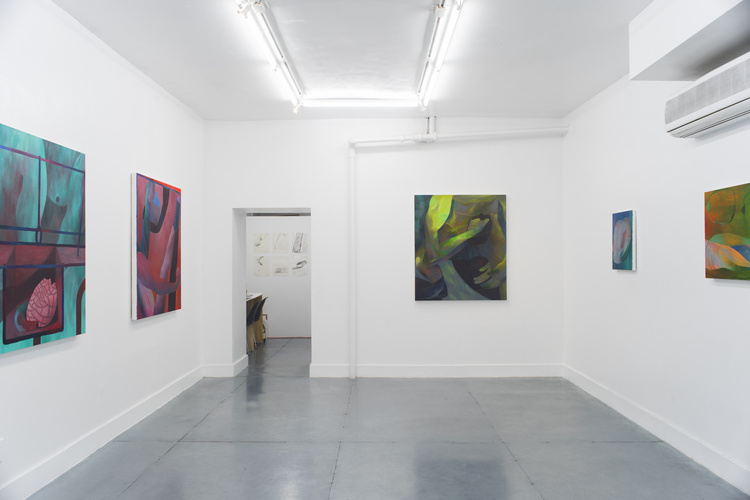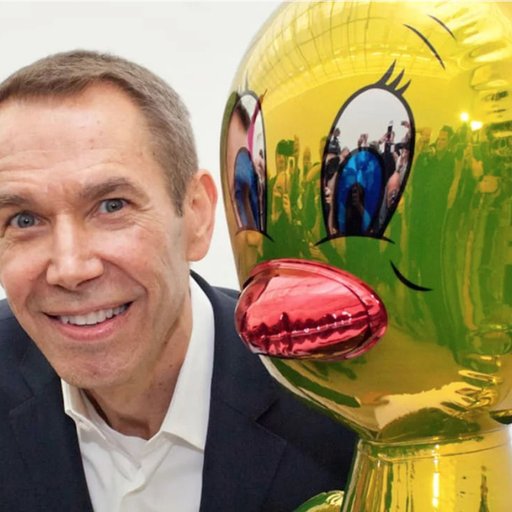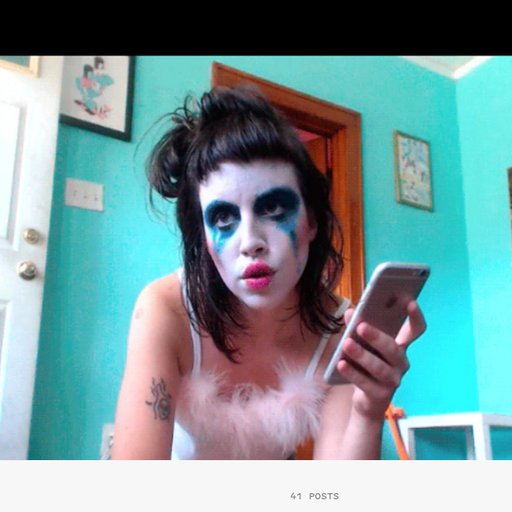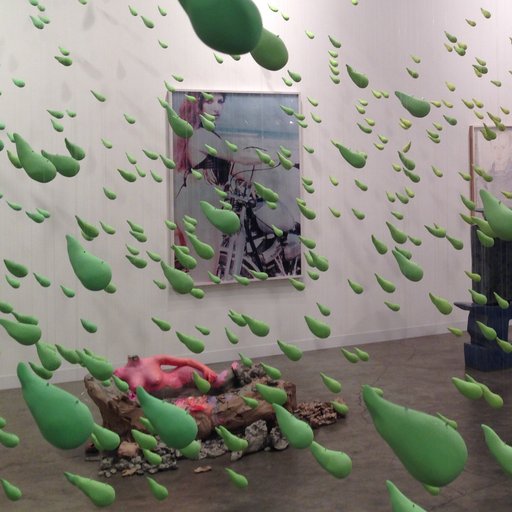If we want to talk about contemporary painting in any thoughtful way, at some point, we’ve got to face “the figure” head-on, so to speak. Today, bodies are just another point of thematic deployment in the piecemeal menu of art language; with every possible brand of visual lexis at our fingertips and image proliferation at an all-time high, style functions less as a by-product of shared philosophy than a question of algorithm. When we interrogate any current iteration of the “figure,” our framing has to include both interest and impulse at the same time.
Some broad strokes, no pun intended: historically, the 20th century heralded a move away from representation in favor of abstraction, and bodies depicted in two-dimensional work either served as a source of symbolism or structural departure (think Beckmann and Picasso, respectively). Eventually, the distorted figure became a short-hand for its artist’s inner life, encouraging a nod towards highly personalized stylization (like Bacon or Basquiat). As late-stage Neo-Expressionism intersected with identity politic, slick, digitized pastiche, and a return to aesthetic pleasure as content, artists like Currin and Yuskavage started utilizing “the figure” as a site of in-genre exegesis, privileging finish over thematic ardence. So began a specifically ‘90s cleavage of body and meaning, replaced instead with an alter-modernist, inherently cynical semiotic positionality. Artists laboring under that era’s shadow grapple with an interesting set of quandaries—in a market that craves bodies, what characterizes “the figure”? Is it still thin, white, and primarily coded as AFAB? What is and isn’t a body, and what are the limits of those definitions? Finally, what are embedded problematics of de facto figuration? How do and should artists trouble our cultural assumptions on the subject?
In this inaugural installment of Two Shows, One Q, we approach a pair of solo exhibitions that deftly bear “the figure’s” mantle into 2019. Enter the un-body, an entity defined by its conspiratorial approach to the shared plague of apotheosis; the big, inescapable meat problem that contours our modes of being. The un-body worries less about a grafted glossary of identity than the anthropocene’s ever-exhausting connivances, a distinctly post-human balance of intimacy and flux. A non-body operates in absence, an anti-body works against preordained interpretation, but an un-body won’t be tethered to any single visual or parochial agenda. An un-body rides the crest of fluidity, maintaining a membranous relationship to both its viewers and the edges of its requisite substrate. In their shows “Early Bodies” at Brennan & Griffin and “Measure of a Boi” at Rubber Factory, both in New York, artists Kristen Sanders and Zoe Avery Nelson describe and circumscribe “the figure” in ways that feel new, but still sensitive to the aesthetic traditions of their chosen medium’s oeuvre. Painting seems to be the ideal vehicle for un-bodied figuration, in fact; out of flattened blankness must rise the subjective dimensionality of pictorial space, an apt metaphor for the tension extant between socially projected and personally directed construction of identity.
Kristen Sanders at Brennan & Griffin Gallery
 Installation shot of "Early Bodies" by Kristen Sanders at Brennan & Griffin
Installation shot of "Early Bodies" by Kristen Sanders at Brennan & Griffin
On Interior Exteriority
In his landmark 1996 essay, "Monster Culture (Seven Theses)," Jefferey Jerome Cohen contends, “The monster is born... as an embodiment of a certain cultural moment—of a time, a feeling, and a place. The monster’s body quite literally incorporates fear, desire, anxiety and fantasy, giving them life and an uncanny independence. The monstrous body is pure culture.” Minneapolis-based painter and Virginia Commonwealth University MFA grad Kristen Sanders explores this chasm of displacement in “Early Bodies,” a suite of ten paintings on view until April 7th at Brennan & Griffin Gallery in the Lower East Side.
These illustrative, electric glyphs map a through-line from prehistoric anthropology to humanoid A.I., portraying the psychic space of speculative ontology as both fraught and hauntingly lonely. Her un-bodies are often composed according to straight-forward portraiture beats, but their nimble, dramatic color stories, executed in layers of glowing neon over warm, cavernous darkness, illuminate her subjects from the inside-out, further underscoring the tandem consciousness and deep vacancy of her chosen morphology. A masking motif is apparent throughout the exhibition, and the anatomical structures of Sanders’ up-close renderings incorporate both animalistic and cyborg-adjacent visual cues, a reminder that humanity is predicated on long-entrenched and increasingly arbitrary in-group mentalities. What is a person if an animal can talk? What is a person if a machine can feel? Poet Margaret Rhee professed in an excerpt from her 2017 book, Love Robot ;
“Once I unbolted you, is that the word?
Silver screws encased you, and I
Let out a sharp sigh upon the sight of
Your metal, blue wires, all your insides.”
If Rhee rendered the industrial sanguine, Sanders, who has also shown at Step Sister in New York and Sadie Halie Projects in Minneapolis, does away with the dichotomy entirely, offering a plaintive, plangent empathy for the mutants she’s made. In “Early Bodies,” the dystopian experience lives in the belly of collective wakefulness. 2019’s “Potential Human” features a gleaming green proto-form glancing towards the viewer through shrouded eyes as it scratches the sand beneath it, waiting patiently to be chosen for a process we dare not name. A referential ripple from Georges Franju’s classic 1960 horror film, Eyes Without A Face , in which a young girl undergoes a face transplant that reduces her to an eerie, masked shadow of her former self, sways to the forefront, encouraging the viewer to consider the values of inclusion in perceived monstrosity.
Zoe Avery Nelson at Rubber Factory
 Installation show of "Measures of a Boi" by Zoe Avery Nelson at Rubber Factory
Installation show of "Measures of a Boi" by Zoe Avery Nelson at Rubber Factory
On Exterior Interiority
If we understand the term ‘un-body’ as a verb, an active abdication from the incarnate might come to mind. A twinge of relief sets in; joy, even. The burden of a performative “self” begins to drift down-stream. In Zoe Avery Nelson’s gorgeous solo presentation at Rubber Factory in the Lower East Side, “Measures of a Boi,” a ringent lightness pervades the room, allowing these dark, generous paintings to act not just as sites of contemplation, but blueprints for a limitless ideology of flesh made manifest, never encumbered by binaristic gender markers, borders, or mundane corporeal restrictions. Philosopher Maurice Merleau-Ponty remarked that “the body... is always something other than what it is, always sexuality and at the same time freedom,” in his magnum opus The Phenomenology of Perception , opining,“What I am all told overflows what I am for myself.” This nod towards self-determination reverberates throughout “Measures of a Boi,” undergirding Nelson’s brushy vocabulary of fragmentary tonal shifts, icy highlights, and hypothetical, fugacious space, at once aquatic and interstellar in its depth.
Nelson, who received their MFA at Columbia University, paints dreamy environments fit to reify fluid, non-dysphoric scenes for habitable motion. Movement plays a large part, here; Nelson’s painterly inspirations include a penchant for techno, the necessarily temporal rupture of which they have folded into their ruminations on embodiment. Instead of posing instability as inherently bad, Nelson makes a case for a praxis of lived transience. In Assuming a Body: Transgender and Rhetorics of Materiality , author Gayle Salamon takes a queer theorist’s lens to Merleau-Ponty’s phenomenological lyricism. “If I am found in the other, so too am I lost there. The “me” that is conjoined with the world in this way is already displaced, disassembled... There is already at the heart of sexuality something disassembled about the body...We unmake the other even as we create them as an object our our desire.” This vision of the exterior self as transient both in process and testimony reflects Nelson’s philosophy towards un-bodying—stand-out painting i dance features hands holding the outlines of two breasts aloft, a disarmingly goofy, intimate moment that challenges our notions of gendered analogue. Nelson has shown at Cleve Carney Art Gallery, Lloyd Dober Gallery, and Roots & Culture Contemporary Art Center.
RELATED ARTICLES:
Portraits of No One: 'Frictionless Painting' and the Smooth Flow Of Capital/Content























